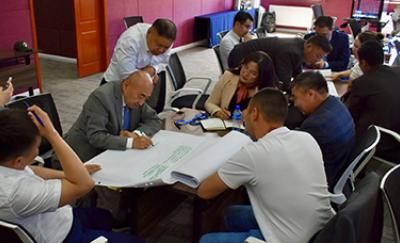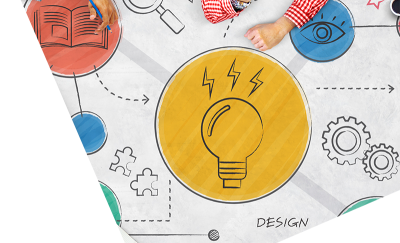A Unique Opportunity: Diverse Women’s Leadership in the Development Sector


Women Leaders in International Development
Diverse leadership in international development is key to increased effectiveness, transparency, and profitability--as well as improved working conditions--for everyone working in the development sector. However, as Quantum Impact's research has shown, although 71 percent of global development workers are women, only 44 percent of global development leadership teams are – a 41 percent decline from early career to senior positions. Twenty percent of development organizations do not have a single woman on their leadership teams, and four out of five organizations have boards that are not gender balanced. For women of color in the industry, racism and sexism result in leadership exclusion – more than 50 percent of development organizations do not have any people of color in leadership roles. LGBT+ colleagues also face discrimination, exclusion, and violence on their way through the leadership pipeline due to policy and cultural barriers in their countries and workplaces.
A Unique Opportunity
International development organizations have unique opportunities to grow diverse and inclusive leadership. Development actors are able to both shift leadership inequality within their own organizations and institutions and are well positioned to respond to leadership barriers in the communities they support. They have a strong pipeline of talent, programming commitments to equity, and the ability to influence leadership policy and practice across multiple sectors.
At Abt, we have made great strides in creating a more gender-balanced leadership cadre. We have met EDGE Move level workforce standards, and are one of only 12 private sector companies to have done so, due to our progress in expanding flexible work and creating an organizational culture, policies, and initiatives that foster greater gender equality. We’ve also again been acknowledged as a high performer under the Global Health Index 2022.


Deliberate and Practical Steps
So how does the development community get to diverse and inclusive gender equality in leadership in development? Deliberate and focused action is key:
- Values-driven focus on recruitment and retention via non-traditional recruitment partners increases flexibility and learning in human resource policy, and builds systems of accountability for leaders to demonstrate their practical steps in increasing diverse women’s leadership.
- Creating a culture of inclusion and critical self-reflection. For, Abt this includes staff working groups addressing LGBT, racial, and disability inclusion; mental health and gender equality; and safe workplaces. Continuous learning opportunities in equity diversity and inclusion (EDI) occur across the company globally, with webinars, workshops, and brown bags addressing equity issues.
- Ensuring we shift influence and leadership by centering experienced people in the countries where we work in policy development. Localization is central to building a pipeline of diverse women leaders in the sector. Abt’s research and ongoing monitoring of localization has been affecting the way we work both in countries where we deliver programs and in our home offices.
- Generating data and evidence for what works in diverse leadership. Abt ensures that our diversity data systems enable us to create evidence-based corporate policy. As a member of industry groups, we share our experience, lessons learned, and success to improve data and analyses on the diversity for the entire sector and its leadership cadre.


Beyond Organizational Change
Development impact reaches well beyond the leadership of individual organisations. Ensuring equity is at the heart of all that we do as development practitioners gives us opportunities to increase the number of diverse and inclusive women leaders across sectors.
- In Papua New Guinea (PNG), the Australian DFAT-supported women’s leadership program for health, in partnership with the PNG Ministry of Health, uses a hub and spoke approach to policy, workplace culture, safety, and staff support to address norms and systems that block women’s leadership.
- The Abt-led U.S. President’s Malaria Initiative VectorLink Project has promoted the empowerment and representation of women in what have traditionally been male-dominated indoor residual spraying (IRS) activities. We work with key stakeholders to identify the specific, local barriers to women’s participation in IRS and have made operational changes to address them.
- Resourcing women-led companies also increases women’s leadership and influence, such as through the RISE fund, which generated AUD $10 million for women-owned businesses essential to COVID recovery in the Philippines, Indonesia, and Vietnam.
Global development organizations need diverse leadership teams for legitimacy, impact, and to achieve positive development outcomes through the diverse points of view women leaders bring. Women, particularly women of color from those countries where we deliver development programs, are central to this work. Through thoughtful, direct action, we can significantly shift the power women have over development and create positive change in women’s leadership well beyond our industry alone.
Read More

Engaging Men in Gender-Based Violence Prevention
To observe the 16 Days of Activism Against GBV, Abt is convening a webinar on engaging men in GBV prevention.

Association for Public Policy Analysis & Management (APPAM) 2024 Fall Research Conference
Experts from Abt Global will be presenting at the Association for Public Policy Analysis & Management (APPAM) 2024 Fall Research Conference.

The Alliance for LGBTQI+ Inclusive Development presents The Impact of Geopolitical Shifts on Inclusive Development
Abt Global is hosting the upcoming hybrid LGBTQI+ Inclusive Development Summit on November 19, 2024.

A Guide to College Transition for Sickle Cell Warriors
HRSA’s Hemoglobinopathies National Coordinating Center guide helps young people with sickle cell disease plan for their healthcare transition at college.
